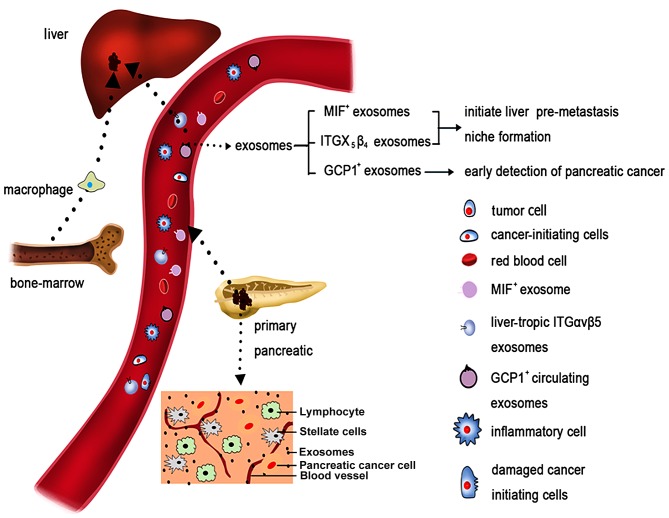Figure 2.
Pancreatic cancer, its microenvironment and its metastatic route. Pancreatic cancer is characterized by a dense stromal reaction, consisting of a desmoplastic reaction with the extracellular matrix, CAFs, tumor cells and immune cells. Both pancreatic cancer cells and CAFs can release exosomes. Exosomes released by pancreatic cancer cells enter the vessels. Due to specific integrin complex expression, exosomes migrate preferentially to the liver. There, they are taken up by Kupffer cells (also known as stellate macrophages), which react by increasing TGF-β signaling. Subsequently, macrophage MIF is released from the exosomes, which results in the initiation of an immune-evasive response. This model supports the creation of a metastatic niche for pancreatic cancer cells mediated by exosomes, which is then followed by the establishment of liver metastases. CAFs, cancer-associated fibroblasts; TGF, transforming growth factor; MIF, migration inhibitory factor; ITG, integrin; GCP1, glypican-1.

